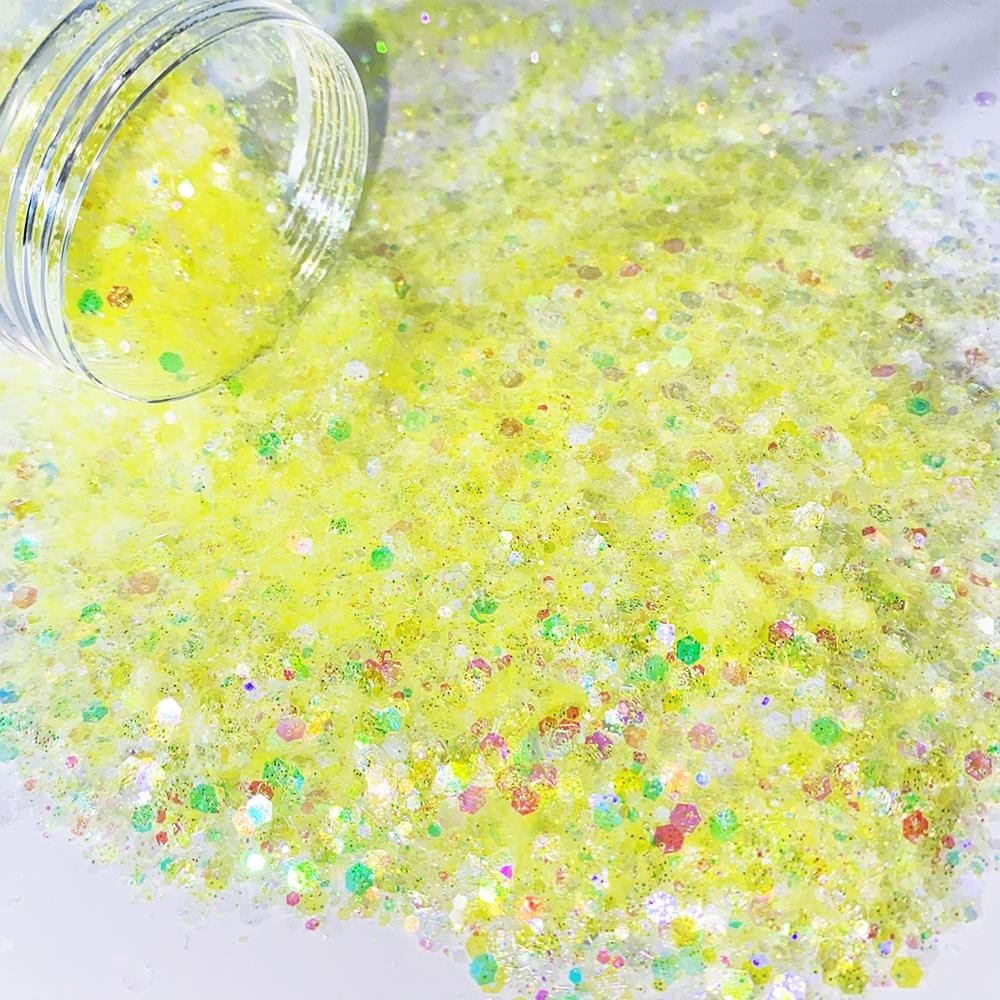First, the history of glitter: glitter was first created by the United States Glitter Company in 1963, and there are more than 40 years of history. Glitter is commonly known as glitter, gold onion film, glitter powder, etc. The silver, gold, color, seven-color film, and laser film are referred to as glitter’s individual varieties.
Second, the basic characteristics of glitter: galglitter glitter shape hexagonal, square (quadrilateral), round, triangular, five-star, rectangular, and some special shapes, if necessary, according to customer requirements to customize other special shapes. The glitter is made of aluminum foil (aluminum material), PET plastic film, PVC plastic film, polyester film, and so on. Among them, the glitter of aluminum material is high-temperature resistant; at about 280℃, the brightness and color will not change; PET plastic film is about 180℃; PVC plastic film is about 75℃.
Three glitter categories: glitter colors are numerous, but the current market can be divided into five major categories: silver and white, gold, color, seven and five-color, and laser. The thickness of glitter also varies depending on the industry and the thickness in production. Currently, there are different thicknesses of 18µm, 25µm, 35µm, 50µm, 188µm, etc. in the market.
Four, glitter’s basic production process: first of all, the surface treatment of raw materials, then vacuum aluminizing, on the protective layer, on the color, and then slitting, processing cutting molding, after post-processing finished products.
- glitter applications: galglitter glitter has a wide range of applications, mainly focused on printing and dyeing, textile printing, screen printing, glass, cosmetics, ink, paint, plastic, toys, handicrafts, high-end decoration, etc. glitter can be mixed with paint, glue, ink, paint, plastic, paper pulp, glass pulp and other types of raw material substrates; can be used Natural air drying, high-temperature oven drying, steam drying and other methods to cure the mixture.
Sixth, glitter application notes.
- Plastic industry in the injection molding process, the need for temperature resistance above 200 ℃, the need to use aluminum materials;
- leather, cosmetics, coatings, and ink industry needs to be solvent and acidity resistant; some industries also need to pass the ASTM D4236-92 standards and cosmetics industry-standard certification.
- printing and dyeing, textile printing, and screen printing industries require uniform shape fuze, no debris, and fine powder.
- all industries require standards of regular shape, good gloss brightness, strong metallic glitter, pure color, and vividness.
- In some printing, coating requirements will be thin (thickness) a little, while in the leather, plastic requirements will be thicker.
The use of our glitter has the following recommendations.
1, glitter is widely used in the printing industry, which is most widely used in screen printing (circular, flat screen). In gravure printing, because the glitter particles are large, it is difficult to print on the fabric, and the finest (such as 1/500 class) products, because of their high cost, it is rarely used in gravure.
2, 1/128 grain size glitter is recommended to use about 40 mesh screen printing (circular printing or flat screen).
3, our glitter is PET material, temperature resistance of 170 ℃; it is recommended that the baking temperature should not exceed 170 ℃, and the time should not be too long.
4、. Be careful with strong alkali and strong acid solvents.
5, more than 1/64 grain size glitter recommended sprinkling gold to arrange production (too coarse, not suitable for screen printing). Sprinkle gold refers to the large grain size glitter evenly sprinkled on the fabric, and production can be first glue paste (viscous, often refers to clothing printing paste type) evenly coated in advance on the fabric, and then glitter evenly sprayed (manually or mechanically) on the fabric; for the printing industry, you can first varnish printed on paper, and then glitter evenly sprayed (manually or mechanically), and then Then put it in the oven and bake it, and wait for the glitter to stick firmly.
